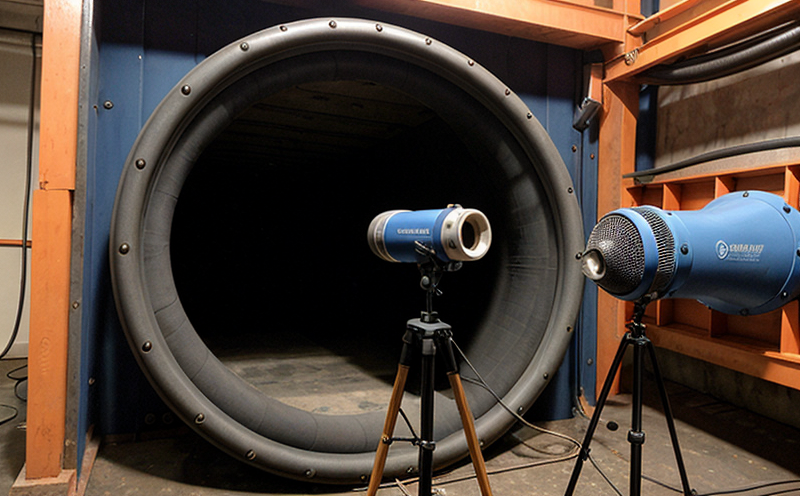ISO 16811 Ultrasonic Testing – Sensitivity and Range Settings
The ISO 16811 standard provides a framework for the application of ultrasonic testing (UT) to detect surface-breaking flaws in metallic materials. This method is widely used across various industries, including aerospace, automotive, manufacturing, and construction, due to its non-destructive nature and ability to inspect components without compromising their integrity.
The sensitivity and range settings are critical parameters that determine the accuracy of UT inspections. Sensitivity refers to the minimum detectable flaw size, while the range setting defines the depth at which flaws can be detected within a material. Proper calibration and adjustment of these parameters ensure reliable detection of defects without false positives or negatives.
The process involves selecting appropriate transducers, coupling agents, and testing frequencies based on the type and thickness of the material being inspected. Calibration standards are used to set initial sensitivity levels, which are then adjusted according to specific requirements outlined in ISO 16811. The range setting is chosen to cover the expected depth of defects while minimizing unnecessary signals from the surface.
During testing, operators carefully position transducers on both sides of a component and apply coupling agents to ensure good contact between the probe and the material. Signals are analyzed using advanced software tools that help in interpreting results accurately. Interpretation involves comparing detected signals against reference standards provided by ISO 16811.
Accurate calibration is crucial for achieving consistent results across different operators and environments. Regular maintenance of equipment, adherence to manufacturer guidelines, and periodic recalibration ensure optimal performance throughout the lifecycle of an inspection tool. Proper documentation of each test procedure, including settings used and interpretations made, helps maintain traceability and compliance with industry standards.
In summary, mastering ISO 16811 ultrasonic testing requires proficiency in selecting appropriate equipment, understanding relevant standards, performing accurate calibrations, and interpreting results correctly. By following established procedures, organizations can achieve high-quality inspections that meet stringent quality control requirements.
Applied Standards
| Standard Number | Title | Description |
|---|---|---|
| ISO 16811-2017 | Non-destructive testing – Ultrasonic testing of metallic materials – Part 1: General principles and guidance | This document provides general principles for the application of ultrasonic testing to detect surface-breaking flaws in metallic materials. It covers topics such as equipment selection, calibration procedures, and data interpretation techniques. |
Eurolab Advantages
At Eurolab, our team of experts offers comprehensive services tailored to meet the unique needs of each client. With decades of experience in acoustics, vibration, and noise testing, we provide state-of-the-art facilities equipped with advanced instrumentation capable of performing precise ultrasonic inspections according to ISO 16811.
Our experienced technicians are well-versed in all aspects of UT, from initial setup through final report generation. They work closely with clients to understand specific requirements and develop customized solutions that deliver maximum value at competitive rates. Our commitment to quality ensures that every inspection meets or exceeds industry standards while maintaining strict adherence to safety protocols.
We pride ourselves on delivering accurate results consistently across multiple projects. By leveraging cutting-edge technology combined with rigorous training programs, our staff remains at the forefront of developments within this field. This allows us to offer innovative approaches to problem-solving that enhance overall performance and reliability for our clients.
Use Cases and Application Examples
- Aerospace manufacturing: Detecting cracks in turbine blades or fuselage structures where even small flaws could lead to catastrophic failures.
- Automotive production: Inspecting exhaust systems for potential corrosion-induced weaknesses that may compromise emissions standards compliance.
- Construction sector: Ensuring structural integrity of steel beams and columns used in high-rise buildings subjected to harsh environmental conditions over long periods.
- Manufacturing industries: Verifying weld quality in critical components like pressure vessels or piping systems where leaks could cause significant safety hazards.





